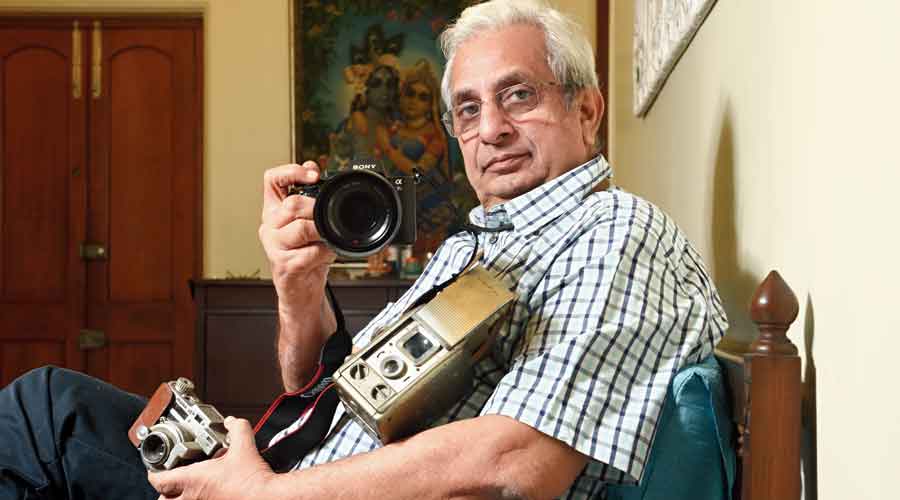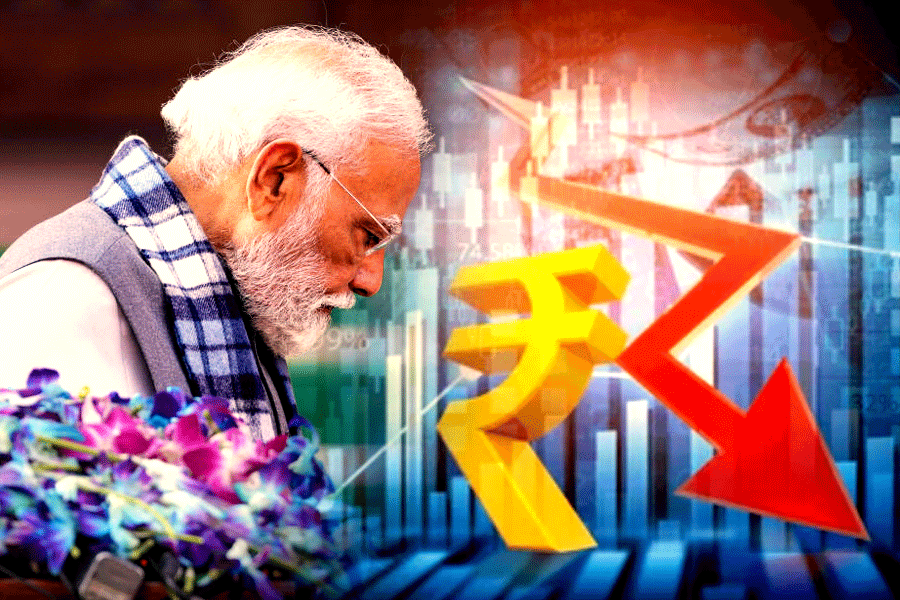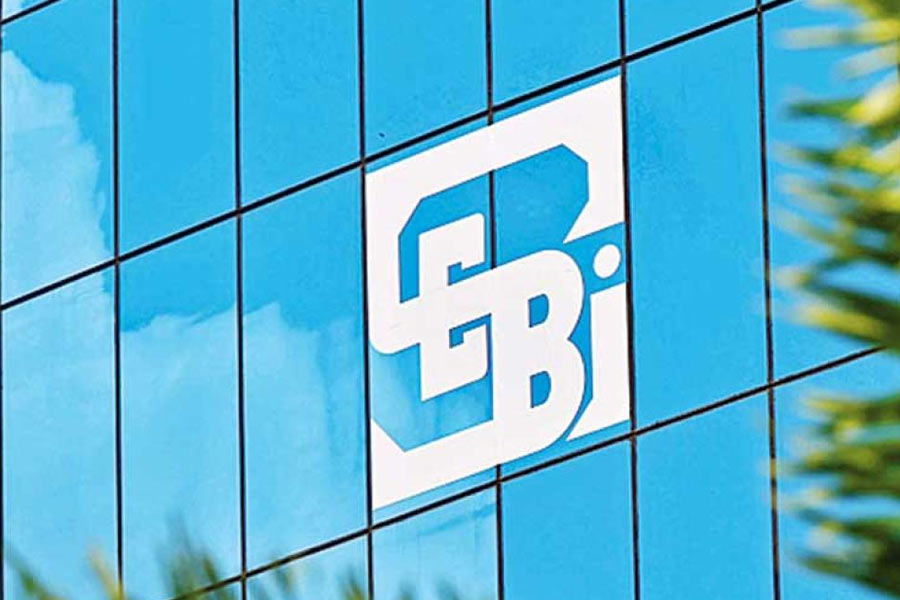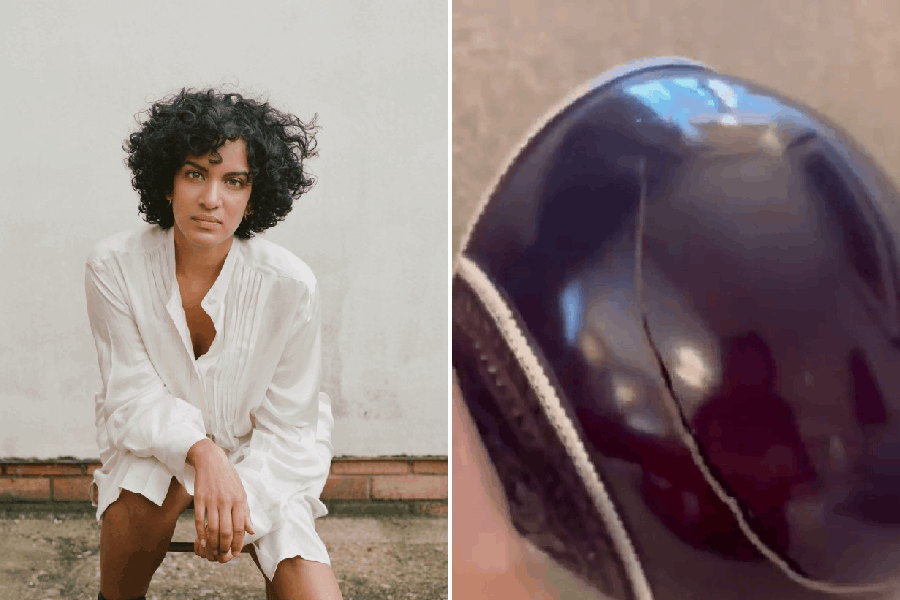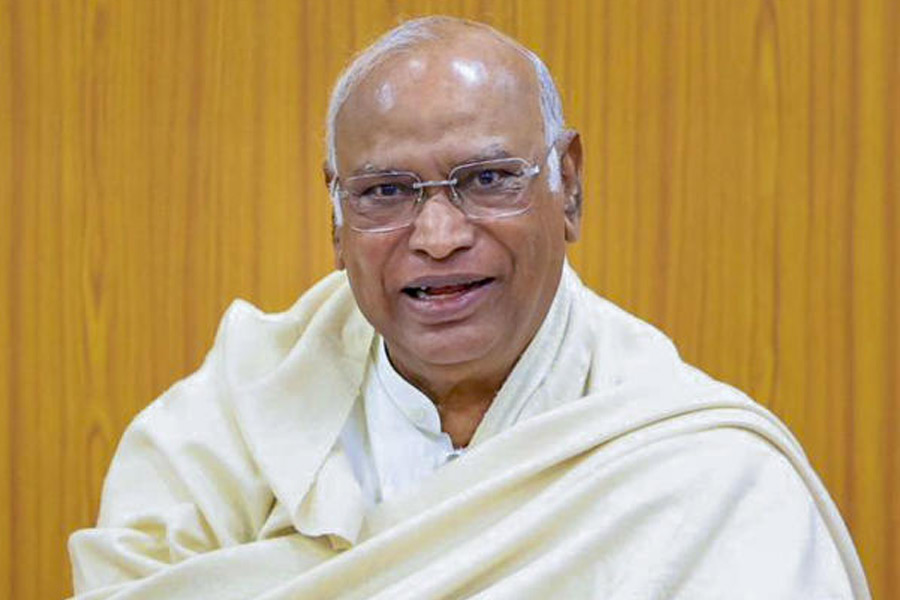He is best known as the man who makes elegant wedding videos for the Gujarati and Marwari communities in Calcutta. Which has made him document the lives of the richest and the most famous. But Naren Goswami’s own life could make a rich Bollywood script, in which Bollywood itself plays a cameo.
He has always been a passionate photographer and once, he was also a truck driver, informs Goswami, 72, a charming, gentle man, seated in the well-appointed drawing room of his flat in Keyatala in south Calcutta. Driving a truck took him far away from the “five-star” world he had inherited from his father.
Goswami was born to a Gujarati family settled in Bhowanipore in the city. His father was a distributor of Hindi films in eastern India, who had in his bag the successful films like Kismat (1969), featuring Bishwajeet and Babita and Victoria No. 203 (1972). It was not surprising that the son was drawn to the camera very early.
About eight-years-old, Goswami was going around with a Sure-flex, taking pictures of whatever he liked. But not too many, as a child was entitled only to the end bits of a film. “There were only be 12 exposures from one reel,” said Goswami. The analog era had its own economy.
By the time he was 13 or 14, and a student of Adarsh Hindi High School in Bhowanipore, he was part of the Photographic Association of Bengal, but yet not as a member as he was underage. He was later awarded lifetime membership of the organisation.
At the association, he met several illustrious photographers: Benu Sen, Jyotish Chakraborty and D.S. Nahar. Raghu Rai would drop in. Sen was outstanding with the way he printed the photos, and Nahar would love to focus on rotting things, recalled Goswami.
After studying at Umesh Chandra College, he got a taste of filmmaking. His father had invested heavily in Yeh Gulistan Hamara (1972), featuring Dev Anand and Sharmila Tagore, and Goswami spent a considerable time with the cast and crew in 1971 in Assam, where the film was shot.
All this would come in handy. Life changed for the Goswami family as several films they had banked on, including Yeh Gulistan Hamara and Zalim (1980), another film they had invested in, sank at the box office. The distribution business stopped. Life hit rock bottom by the end of the 70s.
Two things followed. Goswami became a regular visitor to the ISKCON temple in Calcutta, and for years, took several series of pictures of the idols, which is quite a collection. Two, he reinvented his family’s transport business, which, too, had collapsed.
Goswami began to drive a truck that belonged to the family, carrying goods to every part of India, bathing in rivers, eating at dhabas. He was already married then, with a young family. His wife would feel scared. This was 1981. There were no cellphones. “But those were the best days of my life,”said Goswami. Only he could not carry his camera with him.
Then life changed again, suddenly. In ’83, he took photographs of an engagement ceremony at the ISKCON temple in Calcutta. The photographs were liked so much that he was invited to Delhi to take the pictures of the wedding. “They paid me a fancy price and I took up wedding pictures and videos as my profession,” said Goswami.
In the next few years, he became the go-to wedding videographer for the Gujarati and Marwari communities in Calcutta. “Families would even call me to ask about my availability before deciding on the wedding date,” Goswami said.
These were the video cassette days. He caught on because his videos were different. At a time when the average wedding video was a crudely put together mishmash of garish stuff, Goswami kept his videos understated and clean. His style was “realistic”, the lighting unintrusive, the editing sleek. His camerawork was fine, he kept away from Hindi film songs mostly and used folk or traditional wedding songs and people looked like people, not a fluorescent version of themselves.
“The lettering was special,” laughed his son Ketan, a digital entrepreneur. Goswami would make his son and daughter throw plastic letters on a surface and arrange them as he cleverly shot and edited the process for the title sequence of his videos. His videos were simple and stylish. He also did the wedding photographs. He worked with a team.
As his work increased, he began to travel abroad regularly to keep himself upgraded. From the 80s Goswami began to attend Photokina, a trade fair for the photographic industry held in Cologne in Germany, to buy the latest equipment. He has attended the event till 2012.
He was one of the first to introduce the DVD format to the Calcutta viewership. He would get the DVDs from the US. “Each cost Rs 3,000 at first,” he said. By the mid-90s, he had switched to the digital camera.
By that the weddings, too, had upgraded and were becoming bigger and bigger. “Chefs would be flown in from Europe, flowers from Bangkok. At one wedding a chef was flown in from Japan to make sushis,” he said. Film stars would dance, cricket players would strut.
In Calcutta, all this culminated in 1999, when industrialist L.N. Mittal’s son got married here. Goswami was the videographer. He had worked hard to get the job. “I heard that the Mittals were interviewing people. I went to London and met them,” said Goswami.
Since then he has shot even bigger weddings. He has also been flown to Thailand, the US and Portugal, among other countries, for destination weddings.
“Digital photography makes for very good picture quality,” said Goswami. But something is lost, he admits.
“A film roll had 36 exposures, and for a wedding we would use five to 10 rolls,” said Goswami. “A video cassette would hold 120 or 180 minutes of recording. But digital photography just requires another chip. It allows endless photographs. The difference shows.”
Digital media has also changed memory and one senses a little hurt in Goswami’s voice here. “People don’t look at wedding videos and photographs these days. Everyone takes pictures and all photographs are exchanged and put up on social media,” he said. “Often they call me as a ritual now.”
Goswami is not on social media.
And of late some have also said no to him. “Some young couples, wanting cocktail parties and the bachelor parties alongside their weddings, said no to me after seeing how old I was, though their parents had engaged me. The couples felt that they could not be themselves in my presence,” Goswami said.
Not that he is planning to retire. Weddings have not stopped during lockdown and neither has his work. Plus he is digitising his older reel and video formats. One of them has a very young Kumaramangalam Birla singing at an event for Dev Anand, with the actor sitting in the front row.

